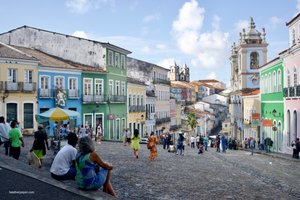Advertisement
Published: December 2nd 2022

 Salvador's Pelourinho
Salvador's Pelourinho
This is the cultural and historic heart of Salvador da Bahia.This blog and more photos are available on my website
https://heatherjasper.com/brazil/salvador-pelourinho Pelourinho means “whipping post” in remembrance of the cruelty of slavery, which built the city. It has been a rich city for hundreds of years precisely because of the slaves used to work the sugar cane fields and build the city. It’s a violent and tragic history, but one that city residents don’t want forgotten.
Despite the heavy history, the neighborhood today is full of joyful music, fabulous restaurants, and engaging museums. It also boasts the best spots to watch the sunset in Salvador. For cultural events, don’t miss the Balé Folclorico da Bahia. There are regular performances three evenings a week and a few times a year are larger performances. Check their website for scheduled performances.
Salvador is full of churches and Pelourinho has half a dozen in just a few blocks. One of the most famous is the Church of Saint Peter of the Clergymen. It was built by the Brotherhood of Saint Peter in 1709 and was renovated in the 18th and 19th centuries.
Advertisement
Tot: 0.074s; Tpl: 0.011s; cc: 10; qc: 25; dbt: 0.0435s; 1; m:domysql w:travelblog (10.17.0.13); sld: 1;
; mem: 1mb

 Salvador's Pelourinho
Salvador's Pelourinho




